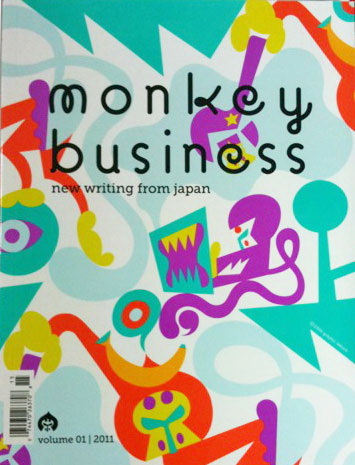星守る犬 [Hoshi Mamoru Inu] by Takashi Murakami (双葉社) (Futaba Sha)
This is a Japanese text only of a graphic novel which has been adapted for the silver screen. It was also chosen as the 2009 Book of the Year by Da Vinci magazine. The title translates into English as The Dog who Protects Stars, which means wanting something so badly but never being able to satisfy that desire, much like the image of a dog that continues to look longingly at the stars but will never able to grasp them. (Although this is a manga, the story may be a bit difficult to follow by just looking at the pictures.)
The story starts off with the discovery of an abandoned car in a vast field of sunflowers. In it, the police find the body of a man. They also find another body which they at first think is a child but discover to be a dog. What the police find strange though is that the body of the man has been dead for a year or and year and a half. However, the dog has only been dead for about three months.
From here, the actual story begins as told through the point of view from the dog. As a little puppy, the dog is left in a cardboard box. If it wasn’t for a young girl who takes him home, he might not have survived. She feeds him, washes him and asks her mother if she can keep him. Mother says to ask father, so in the meantime, she lets the dog sleep in a basket where they keep their linen. Dad first meets the dog by getting bitten when he goes to grab a towel. But even after this beginning, the dog becomes a part of the family. The daughter who first brought the puppy home names him Happy, plays with him and feeds him delicious treats from time to time. Mother provides his meals and discipline when he does something bad, but it’s always Father who takes Happy for a walk.
A year passes. Everyone becomes a little older. Happy tells us he has aged about seven years. Happy notices little changes in the family, but Miku the daughter still plays with him, Mother still feeds him, and Father still takes him for walks. A few more years pass and the changes become even more noticeable to Happy. Miku no longer plays with him, lately it’s Father who feeds him but the one thing that doesn’t change is Father taking him for a walk. But before, Father would always take Happy for a walk late in the day. These days, Father takes him for a walk around noon. Happy also notices that they take a different route but the biggest difference Happy notices is that Father doesn’t talk as much as he used to It will be you, the reader, who realizes that Father has lost his job and is also suffering from some illness as the picture in the background shows Father visiting an employment agency and going to the hospital.
More unfortunate news awaits Father when he returns home. His wife asks for a divorce. Now Father has no job, no family, no home. He’s left with a bit of money after the divorce, but his only companion is Happy.
Father says to Happy, “The hell with it, let’s go South. That’s where my hometown is. Not that there is anything left there.” And so they are off on a road trip. Along the way, they meet a homeless boy who becomes their companion for a short while. The next thing Father knows, the boy has stolen his wallet. Although, he says to Happy, he’s not really mad about the boy stealing but that they boy didn’t have the humility to ask for help.
Tragedy strikes on their journey. Happy falls sick. Father rushes Happy to the nearest vet and pleads with the veterinarians to keep his friend alive. Father sells whatever remains of his belongings and manages to save Happy. They continue on their journey but run out of gas and money in a vast field of sunflowers. Father finally succumbs to a sleep he never wakes up from. Happy lives on and thinks he sees Miku, Mother and Father at a campground and runs to meet them only to be beaten on the head with a stick. Happy slowly crawls back to where Father is, says he’s tired too and passes away.
Then the story comes back to where it started. The finding of a body and a dog in an abandoned car in a field of sunflowers. There is no identification on the body, the license plate of the car is missing, the vehicle identity number has been scratched off. Finding out who this John Doe is the job of a case worker. If the man’s identity cannot be discovered, the body will be cremated and the ashes placed in an urn for the unclaimed. Okutsu-san, the case worker for this job thought it would be a simple matter until he finds a receipt for goods bought at a store. According to the law, it’s his duty to investigate the matter and so begins Okutsu-san’s own journey on retracing Father and Happy’s steps.
What it comes down to is this--a story about life and all its obstacles, good and bad; of love and loyalty between pet and owner, making us remember why dogs are considered “man’s best friend”. Although the lives of Father and Happy end in death, who’s to say if they were happy or not. Father and Happy had each other. They didn’t need anything else. Truly, a wonderful story that will make you laugh and weep, and wonder about the homeless boy who stole Father’s wallet. This is the end of one story; however, Happy has a brother… Ernie Hoyt

